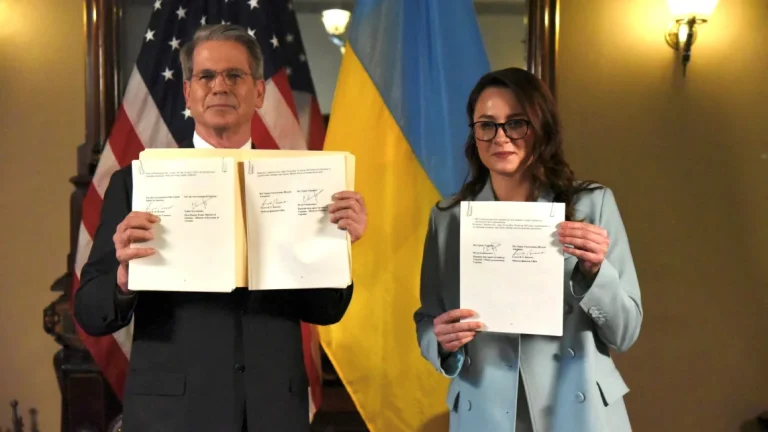China has warned countries against striking trade deals with the United States at Beijing’s expense, ratcheting up its rhetoric in a spiralling trade war between the world’s two biggest economies.
Responding to reports suggesting that US President Donald Trump’s administration is pressuring other countries to isolate China, a spokesperson for China’s Ministry of Commerce said on Monday that Beijing “will take countermeasures in a resolute and reciprocal manner” against nations that align with the US against it.
The warning comes as countries prepare for talks with the US to seek exemptions from “reciprocal” tariffs that Trump imposed and then later paused on about 60 trading partners.
So what’s this latest verbal spat about, how much clout does China wield in global trade and can Trump drive a wedge between other capitals and Beijing?
What’s the backdrop?
The Wall Street Journal recently reported that Trump was seeking to use tariff talks to push US economic partners to curb trade with China and rein in Beijing’s manufacturing dominance.
In return, these nations could secure reductions in US levies and trade barriers. The Trump administration has said it is in negotiations with more than 70 countries.
On Monday, China’s Commerce Ministry hit back, warned other nations that “to seek one’s own temporary selfish interests at the expense of others’ interests is to seek the skin of a tiger”. In effect, it argued that those trying to strike deals with the US – the tiger – would be eaten up themselves eventually.
The ministry also said China would in turn target all countries that fell in line with US pressure to hurt Beijing.
What’s the status of US-China trade?
After Trump suspended his “reciprocal tariffs” on major US trading partners on April 9, he ramped them up on China. US trade levies on most Chinese exports have climbed to 145 percent. Beijing has retaliated with duties of its own at 125 percent on US goods.
Trump has long accused China of exploiting the US on trade, casting his tariffs as necessary to revive domestic manufacturing and return jobs to the US. He also wants to use tariffs to finance future tax cuts.
For his part, Chinese President Xi Jinping travelled to three Southeast Asian countries last week to bolster regional ties. He called on trading partners, including Vietnam, to oppose unilateral bullying.
“There are no winners in trade wars and tariff wars,” Xi said in an article published in Vietnamese media, without mentioning the US.
As with other countries in Southeast Asia, Vietnam has been caught in the trade war’s crossfire. It is not only a manufacturing hub itself, but China also frequently uses it to dispatch exports to the US to avoid the tariffs imposed by the first Trump administration on Beijing in 2018.
Elsewhere, the Trump administration has begun talks with East Asian allies over the tariffs with a Japanese delegation visiting Washington, DC, last week and South Korean officials set to arrive this week.
Many countries now find themselves stuck between the world’s two biggest economies – China, a large source of manufactured goods and a key trading partner, and the US, a crucial export market.
